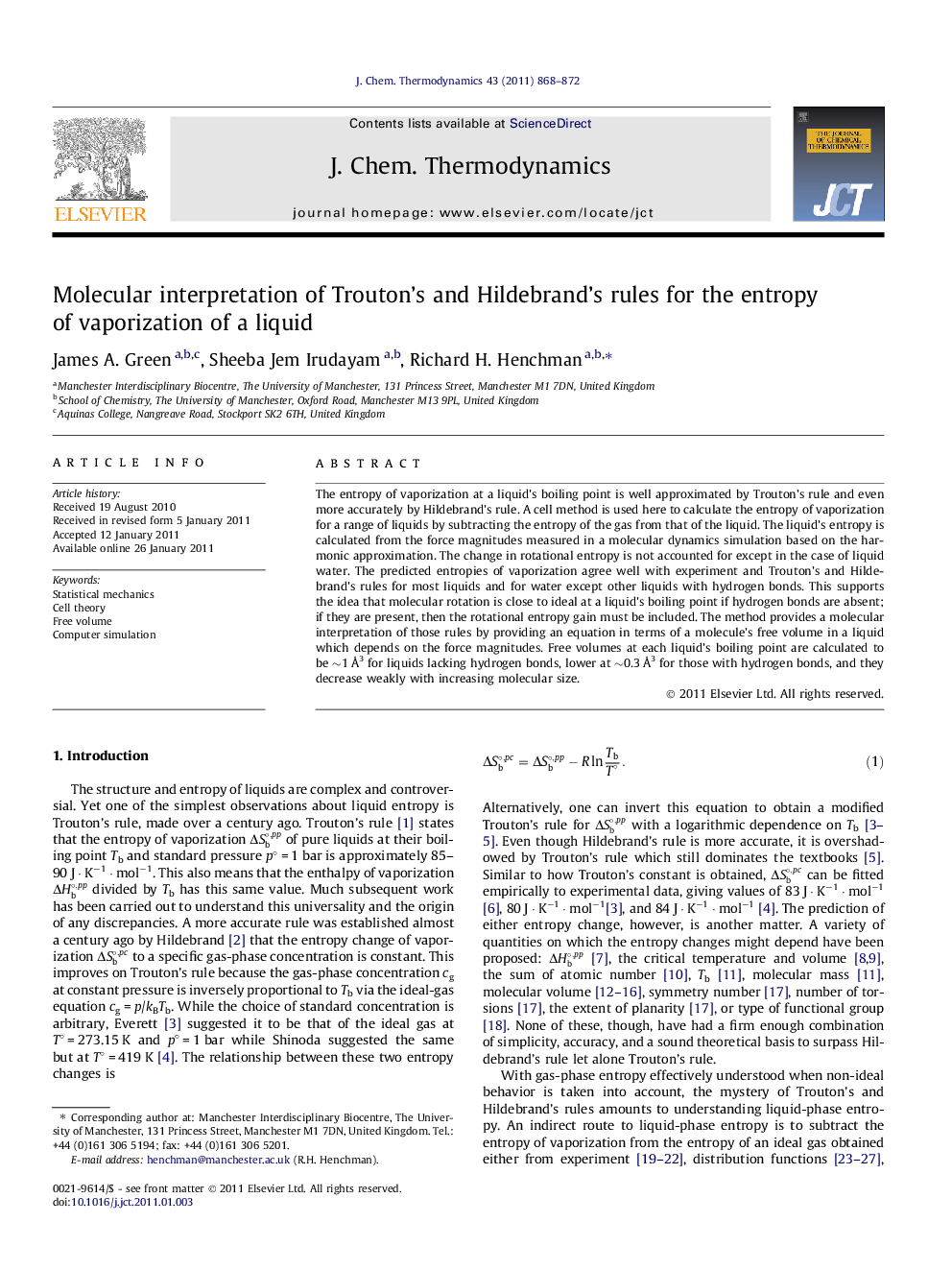| کد مقاله | کد نشریه | سال انتشار | مقاله انگلیسی | نسخه تمام متن |
|---|---|---|---|---|
| 216628 | 1426276 | 2011 | 5 صفحه PDF | دانلود رایگان |

The entropy of vaporization at a liquid’s boiling point is well approximated by Trouton’s rule and even more accurately by Hildebrand’s rule. A cell method is used here to calculate the entropy of vaporization for a range of liquids by subtracting the entropy of the gas from that of the liquid. The liquid’s entropy is calculated from the force magnitudes measured in a molecular dynamics simulation based on the harmonic approximation. The change in rotational entropy is not accounted for except in the case of liquid water. The predicted entropies of vaporization agree well with experiment and Trouton’s and Hildebrand’s rules for most liquids and for water except other liquids with hydrogen bonds. This supports the idea that molecular rotation is close to ideal at a liquid’s boiling point if hydrogen bonds are absent; if they are present, then the rotational entropy gain must be included. The method provides a molecular interpretation of those rules by providing an equation in terms of a molecule’s free volume in a liquid which depends on the force magnitudes. Free volumes at each liquid’s boiling point are calculated to be ∼1 Å3 for liquids lacking hydrogen bonds, lower at ∼0.3 Å3 for those with hydrogen bonds, and they decrease weakly with increasing molecular size.
Research highlights
► A method to calculate a liquid’s entropy of vaporization is proposed.
► The entropy of vaporisation depends on force magnitudes from computer simulation.
► Calculated values agree with experiment, Trouton’s rule and Hildebrand’s rule.
► Free volumes decrease for larger molecules or those with stronger interactions.
Journal: The Journal of Chemical Thermodynamics - Volume 43, Issue 6, June 2011, Pages 868–872